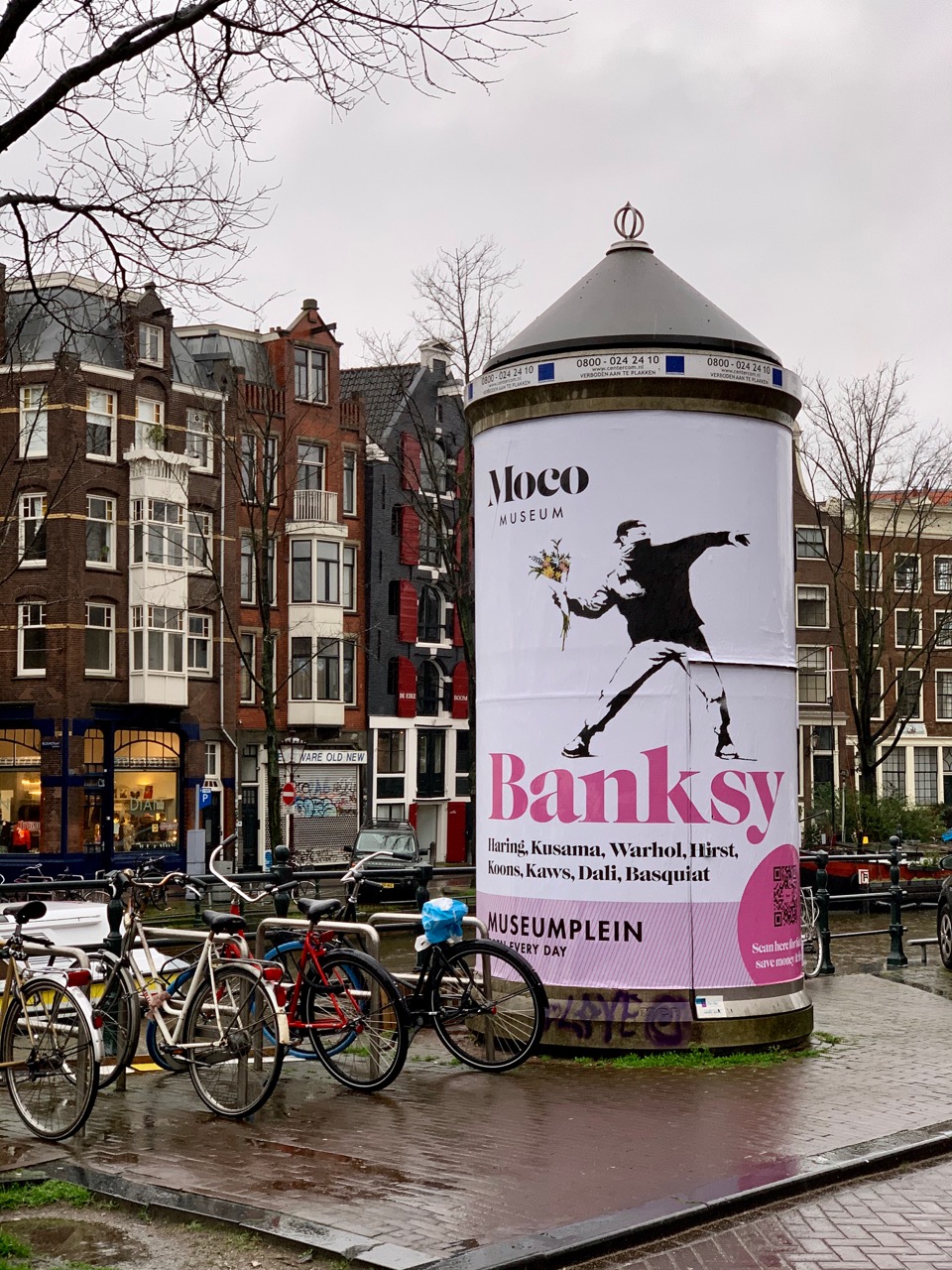Outdoor Advertising in Amsterdam
Outdoor advertising and the overall aesthetics of our cities, with the capital at the forefront, have recently been a frequent topic in the media. Western European cities, such as Amsterdam, are theoretically shown as an unattainable model. Last week's visit to the Integrated Systems Europe trade fair gave me an opportunity to take a closer look at what Amsterdam looks like in terms of outdoor advertising. I observed what forms of OOH and DOOH advertising function there and whether outdoor advertising in Amsterdam differs greatly from what we have in Warsaw.
And as I found out, it doesn't differ that much.
Advertising Tax
There are numerous forms of OOH advertising in Amsterdam. To somewhat limit the chaos - the city authorities, as practical Dutch people do, found a very simple solution. They don't have prohibitions or complex and controversial regulations (as was done in Warsaw and a few other Polish cities). Instead, since January 1, 2020, they have a tax on advertisements visible from the street.
The tax applies to advertisers who communicate in public spaces, whose advertisements have an area larger than 0.25 m² and are displayed continuously for more than 10 weeks per year. The regulation applies to everyone. Both small entrepreneurs displaying a poster in a shop window or a banner in front of their door, as well as professional OOH advertising networks.
The City of Amsterdam uses special scanning equipment to register and measure all advertising forms in the city, and then charges the advertising tax. The fee is collected for all signs, inscriptions, billboards, neon signs, flags, etc. Its amount depends on the city zone and the total advertising area.
For example: in the strict center of Amsterdam, for an advertisement with an area from 0.25 to 2 m², you have to pay 150 EUR net annually.
For an advertisement from 50 to 100 m² - 1250 EUR annually, and for an advertisement from 400 to 1000 m² - as much as 60,000 EUR annually.
The maximum fee is 100,000 EUR net annually. In other districts, the fee is lower. Detailed information on this topic can be found at this link: https://www.amsterdam.nl/veelgevraagd/?productid=%7B9DE274DC-5C5C-4E5D-A8A3-12B91B5AB250%7D
The city authorities want to achieve two goals this way - reduce the number of advertisements in the city and earn money.
Various Advertising Forms
Unfortunately, the weather wasn't conducive to walking and taking photos. So I limited my walk to the immediate vicinity of the hotel. I visited the strict city center and the area around RAI - the place where the ISE fair was held. Even in a relatively small area, I saw a whole range of different forms of outdoor advertising. Among them are traditional and digital CLP carriers, various format poles, frames on electrical boxes and street lamps. There are also applications pasted on trams, billboards, LED screens, flags, etc.
OOH Operators
The leading OOH companies operating in Amsterdam are JCDecaux and Centercom. On the website of the latter company, we can read: "Our mission is to use public space more effectively to improve the quality of space. We do this primarily by giving the existing function of objects in public space an additional social function: using high-quality advertising for both cultural and commercial organizations. We also offer communication opportunities for smaller initiatives, as well as sponsor new cultural initiatives".
This philosophy is illustrated by the following image taken from the company's website:
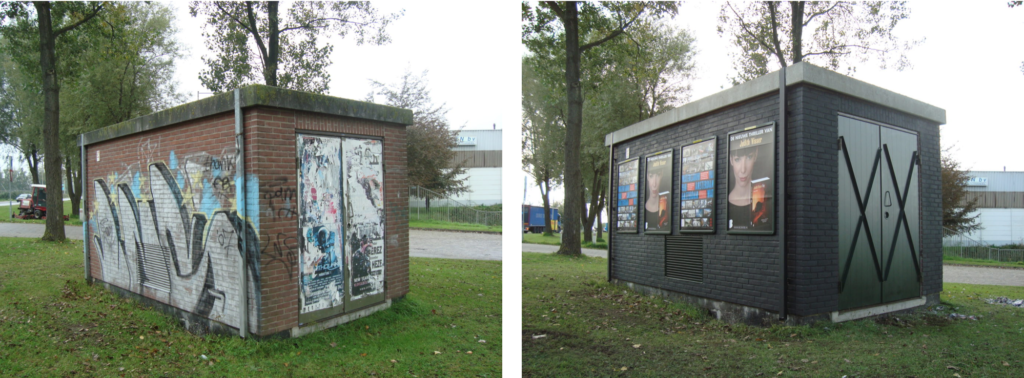
Outdoor advertising in Centercom's offer includes various carriers. Among them are poles, frames on street lamps and electrical boxes.
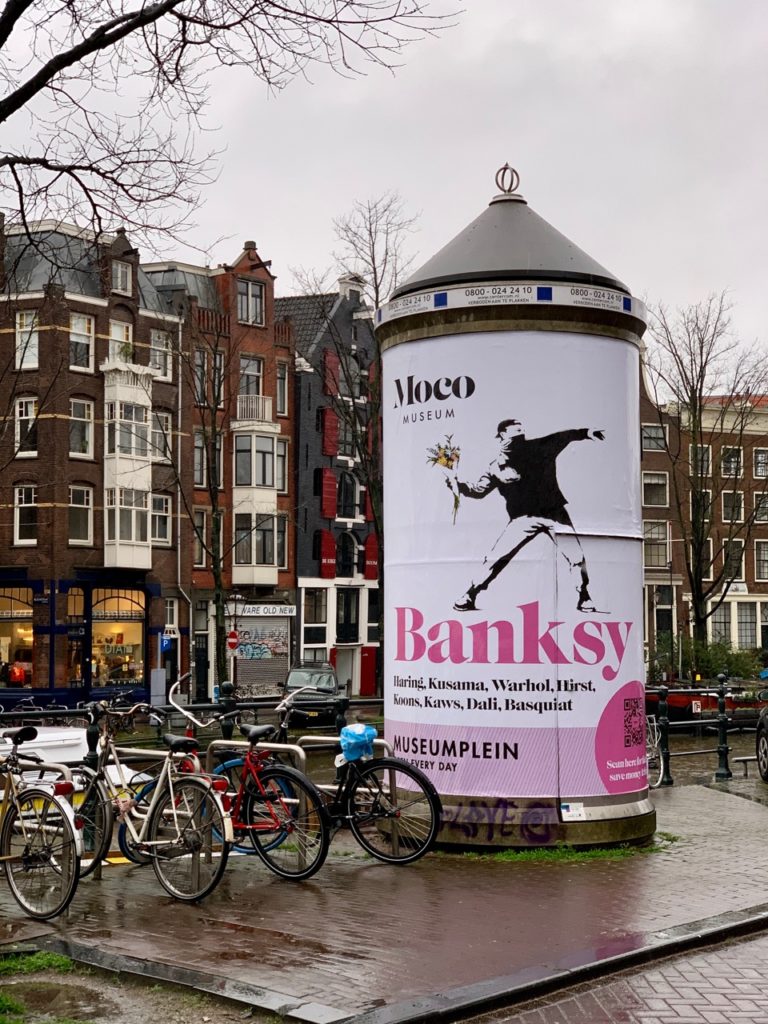
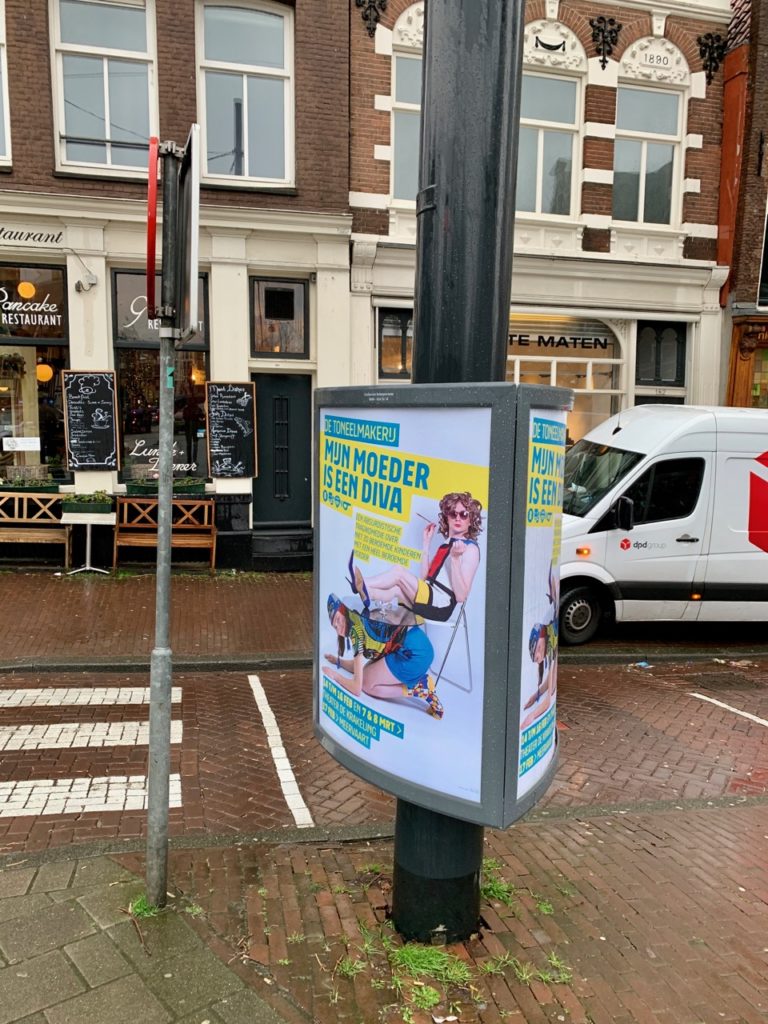
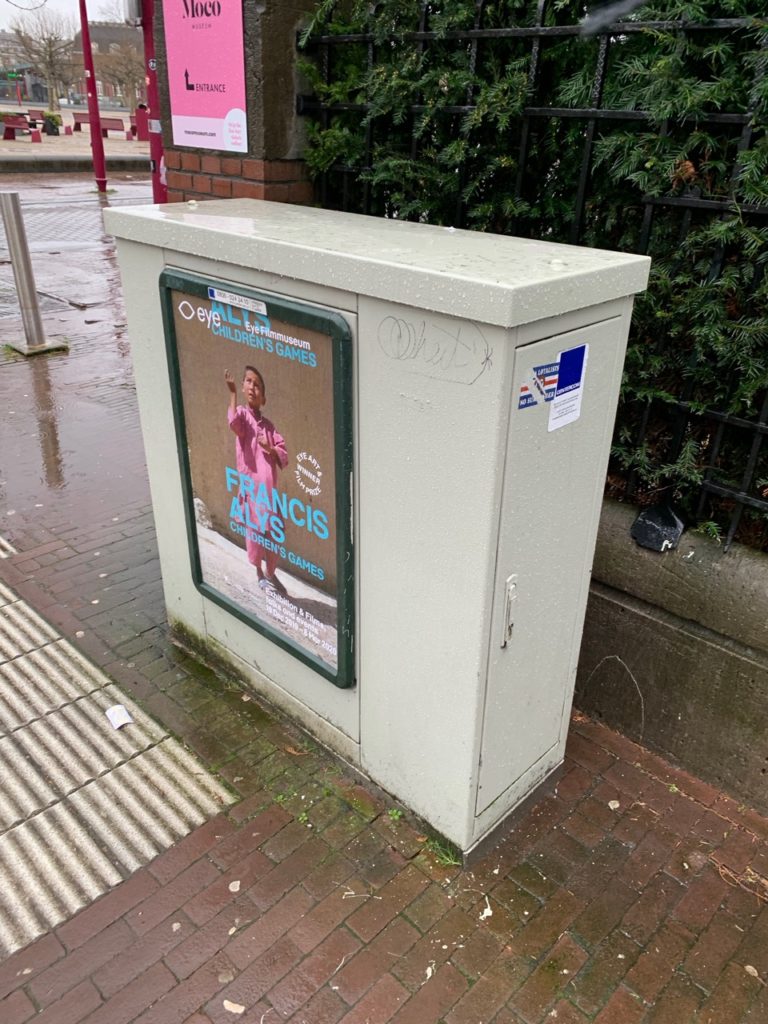
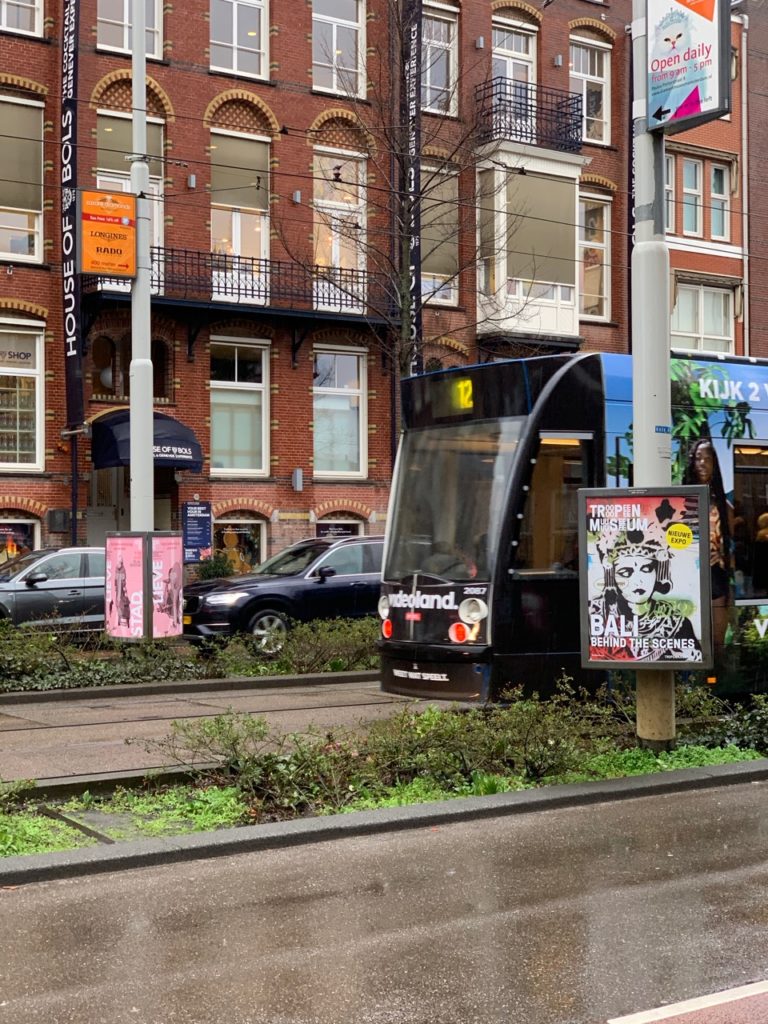
The second dominant outdoor advertising company in the city is JCDecaux. It is the operator of bus stop and free-standing citylight poster carriers, traditional, scrolling and digital.
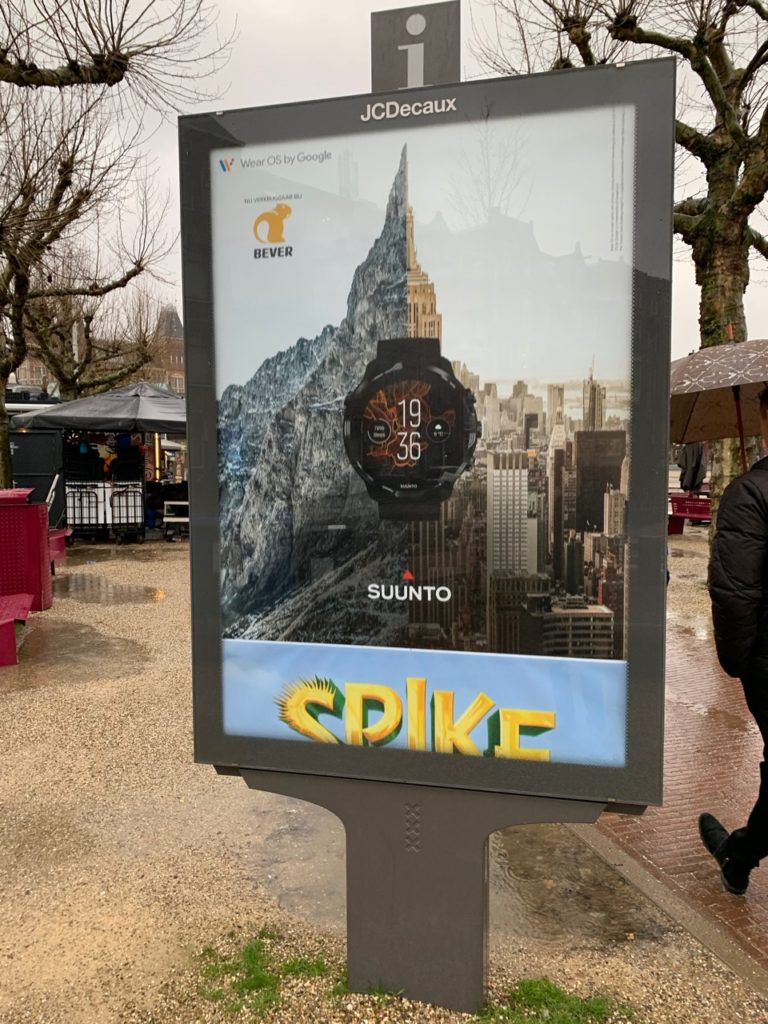
JCDecaux also has a network of digital LED billboards in Amsterdam with a format of 6.5 m² and traditional billboards with formats of 8 m² and 18 m². The company also sells advertisements pasted on 30-meter trams and ferries.
Among other forms of OOH advertising, I'll also mention smaller format advertising poles and large format LED screens. They are set up for special occasions in places where various events take place. Like this one at the entrance to the RAI grounds.

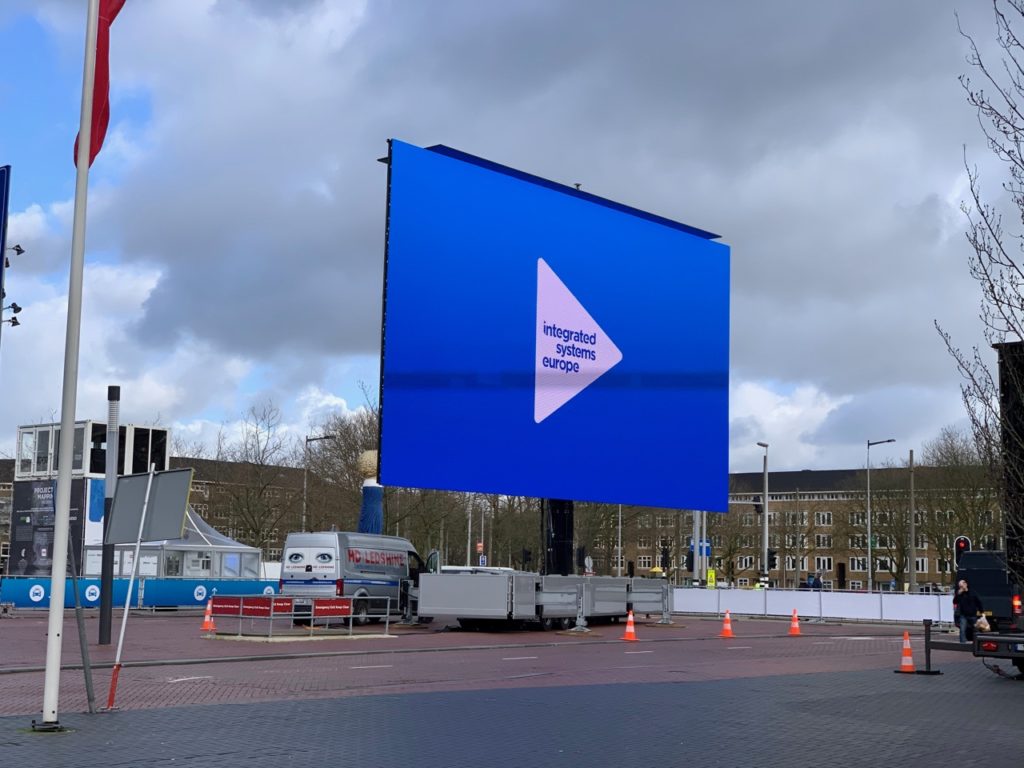
If you're curious about other, this time non-European examples, a few days ago Diana Polska - Pękala from MyLED wrote about OOH and DOOH advertising in New York.

